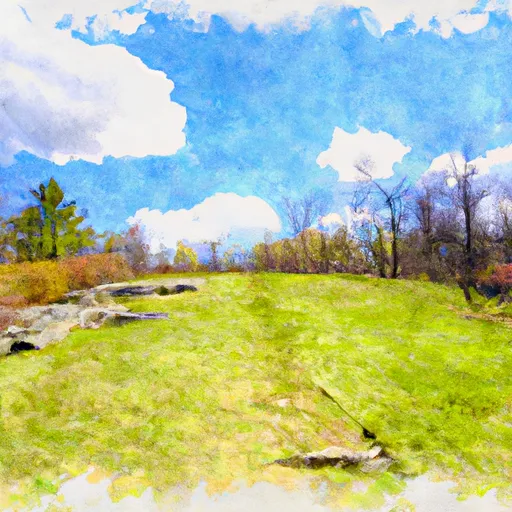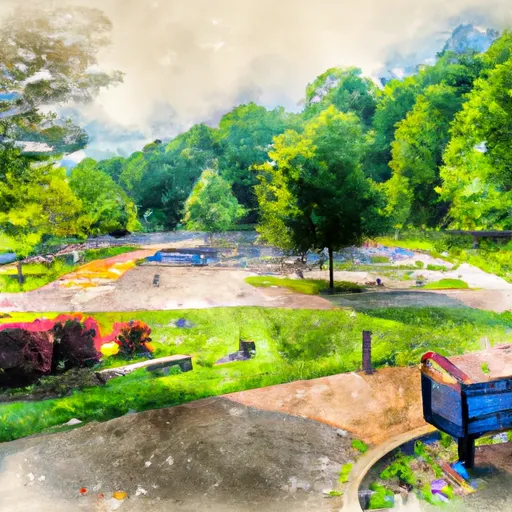Wall Park
Rate this placeNearby: Blueberry Hill Park Scharmyn Park
Last Updated: December 26, 2025
Wall Park is a beautiful recreational area located in the state of Pennsylvania.
°F
°F
mph
Wind
%
Humidity
Summary
It offers several compelling reasons to visit, including its diverse range of attractions and activities. From natural beauty to historical significance, Wall Park has something for everyone.
One of the main reasons to visit Wall Park is its stunning natural scenery. The park encompasses verdant forests, rolling hills, and picturesque landscapes, making it a haven for nature enthusiasts. Visitors can enjoy hiking, biking, or simply taking leisurely walks along the park's well-maintained trails, allowing them to immerse themselves in the serene ambiance.
Wall Park also boasts several points of interest that are worth exploring. The park is home to a variety of wildlife, providing ample opportunities for birdwatching and wildlife spotting. Additionally, there are numerous picnic areas and pavilions, making it an ideal spot for family outings and gatherings. The park also offers recreational facilities such as playgrounds, sports fields, and courts, ensuring there is no shortage of activities for visitors of all ages.
One interesting fact about Wall Park is its rich historical significance. The park is located near the site of an ancient Native American settlement, offering a glimpse into the region's past. It also features several historical landmarks, including old stone walls and remnants of old structures, which add to the park's charm and appeal.
The best time to visit Wall Park largely depends on personal preferences. During the spring and summer months, the park is adorned with colorful flowers and lush greenery, creating a vibrant atmosphere. This time of year is perfect for outdoor activities and enjoying the park's natural beauty. Autumn brings breathtaking foliage, making it an excellent time for photography enthusiasts. Winter also offers its own unique charm, with opportunities for cross-country skiing and snowshoeing.
To ensure accuracy, it is recommended to verify the information provided here with multiple independent sources, such as official park websites, local tourism boards, and travel guides.
Weather Forecast
Park & Land Designation Reference
Large protected natural areas managed by the federal government to preserve significant landscapes, ecosystems, and cultural resources; recreation is allowed but conservation is the priority.
State Park
Public natural or recreational areas managed by a state government, typically smaller than national parks and focused on regional natural features, recreation, and education.
Local Park
Community-level parks managed by cities or counties, emphasizing recreation, playgrounds, sports, and green space close to populated areas.
Wilderness Area
The highest level of land protection in the U.S.; designated areas where nature is left essentially untouched, with no roads, structures, or motorized access permitted.
National Recreation Area
Areas set aside primarily for outdoor recreation (boating, hiking, fishing), often around reservoirs, rivers, or scenic landscapes; may allow more development.
National Conservation Area (BLM)
BLM-managed areas with special ecological, cultural, or scientific value; more protection than typical BLM land but less strict than Wilderness Areas.
State Forest
State-managed forests focused on habitat, watershed, recreation, and sustainable timber harvest.
National Forest
Federally managed lands focused on multiple use—recreation, wildlife habitat, watershed protection, and resource extraction (like timber)—unlike the stricter protections of national parks.
Wilderness
A protected area set aside to conserve specific resources—such as wildlife, habitats, or scientific features—with regulations varying widely depending on the managing agency and purpose.
Bureau of Land Management (BLM) Land
Vast federal lands managed for mixed use—recreation, grazing, mining, conservation—with fewer restrictions than national parks or forests.
Related References

 Blueberry Hill Park
Blueberry Hill Park
 Scharmyn Park
Scharmyn Park
 Ross Community Park
Ross Community Park
 Avonworth Community Park
Avonworth Community Park
 Ellen Hughes Park
Ellen Hughes Park